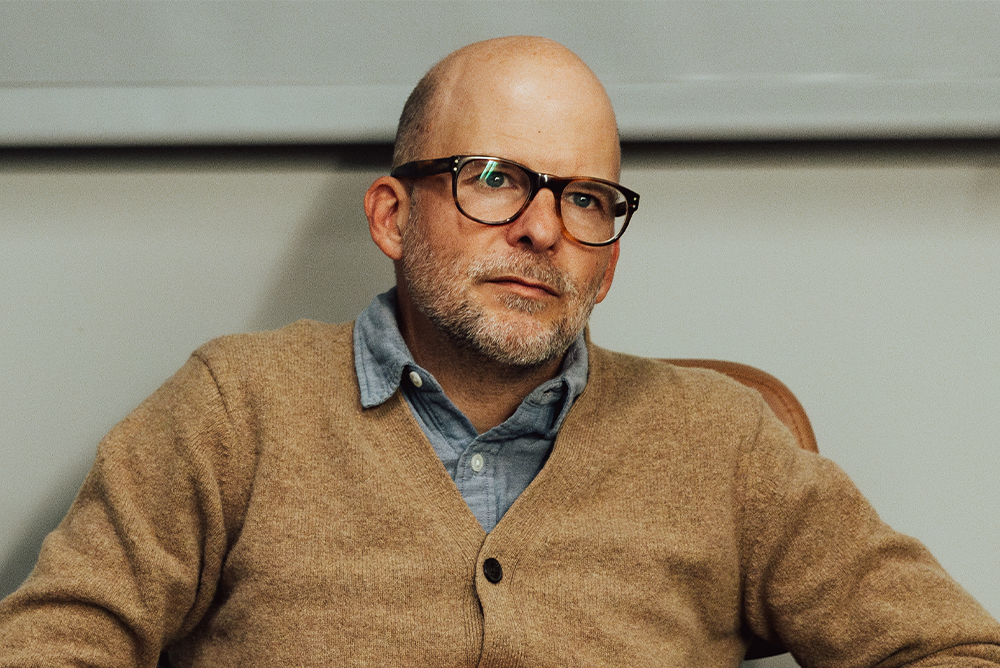
Photo by Chad Brady.
Joel Ferree is the program director of LACMA’s Art + Technology Lab which supports artist experiments with emerging technology. He was director of the Spencer Brownstone Gallery in New York City from 2006 to 2011. Before sitting on the panel for the Zócalo, Arts for LA, ASU Narrative and Emerging Media Program, and LACMA program “Is AI the End of Creativity—Or a New Beginning?,” he joined us in the green room to talk jazz, pizza, and the humbling experience of working with artists.
Where is one of your favorite places to go in all of Los Angeles?
One of my favorite places is Lucky Boy, which is on South Arroyo Parkway. It’s in Pasadena and it’s like an old burrito and burger stand. I usually will get their breakfast burrito with extra hashbrowns and avocado.
You’re director of LACMA’s Art + Technology Lab. What’s one project you’ve come across there that has surprised you?
I’ll mention Sarah Rosalena’s, because she’s participating in this panel, too. She came in with a proposal that was looking at artificial intelligence and Indigenous textile practices. It evolved into something more exploratory around astronomy and how Western science has, in many ways, crowded out other ways of interpreting the heavens. She became really interested in Mount Wilson Observatory’s glass slide collection, one of which is called the “VAR!” plate. It’s what informed [Edwin] Hubble’s discovery of our place in the universe, and then ultimately, that the universe is expanding. It was sort of our creation story in terms of a Western scientific view. But there’s other cosmologies, other ways of interpreting how we got here and how we look at the heavens and make sense of them. That is kind of overlooked by this holy grail of science.
What have you learned from working with artists?
Working with artists is a very humbling experience because you just learn and learn and learn, and you get to this point where you realize that you never really have the right answers and that you have to just constantly keep digging and just be curious and kind of realize that nothing is ever final or said and done, that it’s always an ongoing evolution and conversation.
Who is your dream dinner guest—dead or alive?
Jazz musician Yusef Lateef. He was a really brilliant musician, who was constantly evolving. Jazz was so informed by classical music, based on improvisation of that classical music, which is all Western. But later on in his career, Yusef started incorporating more and more Eastern approaches to music composition. And you can hear it, both in his playing and in the compositions he created. They’re just so unique, and really moving.
How have you yourself used AI lately?
One way is with prototyping chatbots and different approaches for digital engagement at the art museum. I’m curious about how AI can play out within the art institution.
What do you miss most about New York?
When I moved here 11 years ago, I missed the pizza. But now L.A. has totally upped its game. So, I’d say the subway.



